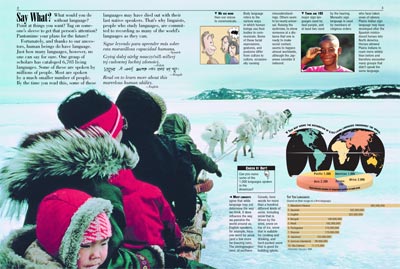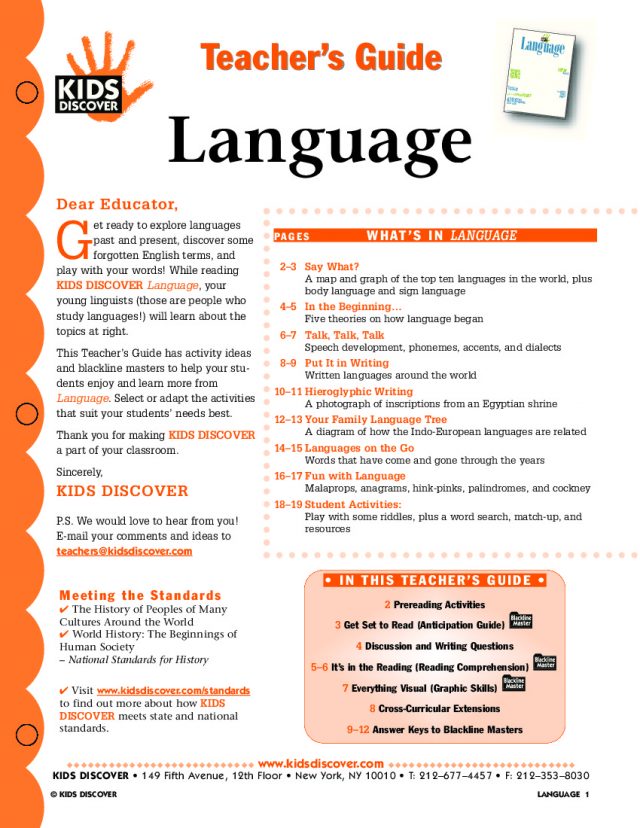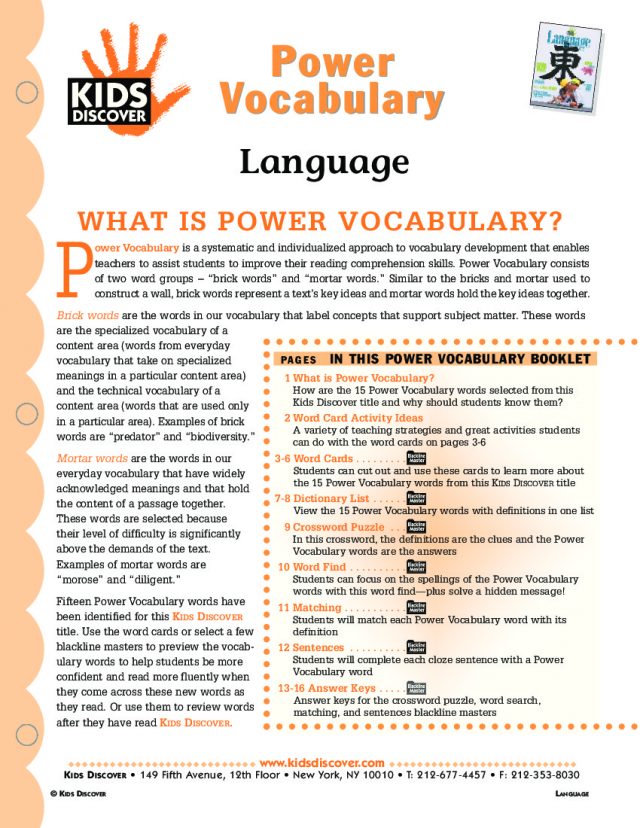Get digital access to this title and hundreds more with a Kids Discover Online subscription.
Get digital access to this title and hundreds more with a Kids Discover Online subscription.
Language
Where did language come from? Where is it going? These questions and more are answered in Language, for kids, which investigates theories about how humans learned to speak, how languages have developed over time, and the process by which new words are born, old ones fade out, and others change meaning. First, kids will explore the amazing variety of spoken languages, which number over 6,000, and look at Otto Jespersen’s amusingly named theories about the birth of language, including the “Pooh-Pooh” theory, which says that humans began talking to express emotions related to pain, anger, and frustration.
The physical requirements of language, for kids, come under scrutiny next, with a look at the vocal tract and how sound is produced, as well as how phonemes – the physical components of speech – differ from language to language. For many cultures, the written word was the next step in language development, but kids will be surprised to find that many languages are not written, and those that are vary wildly in their alphabets and writing systems. All languages, kids will read, stem from a proto-language spoken over 20,000 years ago, and have since developed into 13 major language families – including Indo-European, to which English belongs and which includes languages as disparate as Swedish and Hindi. Finally, kids will have fun seeing how people across centuries and cultures have used language as a playground, expressing themselves through palindromes, puns, slang, and more.





